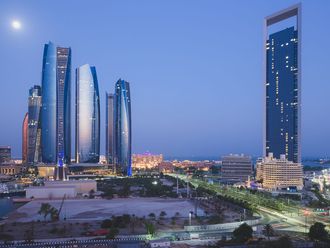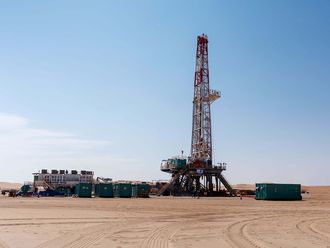
Launceston, Australia: The premium of Brent crude over Dubai has soared to the highest in almost two years on tensions over Syria, but how long it stays there depends not only on the likelihood of conflict, but on how Asia’s major crude buyers respond to the crisis.
The Brent-Dubai exchange for swaps reached $5.88 (Dh21.58) a barrel on August 28, the highest premium for the world’s light crude benchmark over the Middle East grade since October 2011, just as the Libyan conflict was starting to wind down.
The premium had risen as high as $7.61 a barrel in 2011 during the early part of the revolution that led to the overthrow and death of Libyan dictator Muammar Gaddafi, indicating there is the potential for further gains should the current Syrian conflict escalate.
However, after hostilities largely ended in Libya, the spread started to decline rapidly, dropping to a low of $1.50 a barrel by June last year.
The mounting concern over Western military action against Syria and the potential for the conflict to spread further in the volatile Middle East has seen Brent’s premium over Dubai leap 44 per cent in little over a month.
It’s not a surprise that Brent prices have responded more aggressively to the Syrian situation, given its role as the global benchmark with the most liquid futures market.
Intraday high
However, Brent prices can respond equally quickly in the other direction, as can be seen by the 2.9 per cent drop between the intraday high of $117.04 a barrel on Thursday and the low of $113.63 in Asian trade Friday.
The price decline was largely driven by the British parliament’s narrow vote against authorising the use of military force against the government of Syrian President Bashar Al Assad, which is suspected of using banned chemical weapons against civilians.
The volatility of Brent will obviously influence the day-to-day movements in the Brent-Dubai spread, but of more interest to oil producers, traders and consumers are the likely medium- and longer-term trends.
For the next few months much will depend on whether Asia’s major crude buyers, especially top consumer China, respond to the threat of supply disruptions from the Middle East by building up inventories.
It should be remembered that China boosted imports in the first half of last year, with as much as 500,000 barrels per day (bpd) flowing into stockpiles.
While some of this was filling strategic storage tanks, it’s likely that some was because of concern over the whether Iranian oil would be available as Western sanctions against Tehran’s nuclear programme were ramped up.
When it proved that the market was well supplied and could handle the loss of Iranian barrels, Chinese imports moderated in the third quarter of last year.
If the Chinese decide they need a cushion of supplies, it’s likely they will turn to Middle Eastern supplies, given their preference for medium and heavy grades, and the fact that these cargoes are at a wider discount to Brent-priced supplies from West Africa.
Chinese buying
The rising Brent premium may already be influencing Chinese buying, with cargoes from West Africa to China expected to fall to their lowest level in nearly two years, according to a Reuters survey.
China may take 607,000 bpd from West Africa next month, down from 950,000 bpd this month, with higher prices for the light, sweet crudes from the region likely a factor in the 29 per cent cut.
Other Asian refiners may also try to buy less crude priced off Brent and more Dubai-linked grades, but overall there is likely some nervousness among refiners about supplies, and not all of it is related to Syria.
Iraq has become a major supplier to Asia, but is proving somewhat unreliable, with shipments of its main Basra Light grade likely to be lower in September because of maintenance at its southern terminals.
An initial loading programme indicates exports of about 1.8 million bpd in September, a substantial drop from the 2.3 million bpd loaded so far in August.
A shortage of Iraqi oil, coupled with ongoing pressure from the United States on Asian nations to reduce purchases from Iran, has sent premiums for Middle East cargoes to multi-month highs.
Narrowing pressure
Oman crude for October on the Dubai Mercantile Exchange settled at $115.23 a barrel on Thursday, up $3.15 a barrel. This put the contract at $5.77 a barrel above Dubai swaps, up from a premium of $2.54 in the previous session.
This suggests narrowing pressure on the Brent-Dubai spread from a likely rise in the Dubai side of the equation.
However, the spread will still be at the short-term mercy of movements in Brent, with the market trading with a “buy the rumour, sell the fact” mentality. This was shown by the rally as war talk ramped up and the quick reversal after the British parliament said no, or at least not yet.
Another factor that may influence the spread will be how much oil Saudi Arabia makes available, with reports suggesting that the world’s largest exporter will produce 10.5 million bpd in the third quarter, a up 1 million bpd from the second.
Higher Saudi output, especially if coupled with lower official selling prices in coming months, will serve to put a brake on price rises for Middle East medium and heavy grades.
Right now the Brent-Dubai spread is struggling between competing influences, but the factors boosting Brent are likely to be more transient than those boosting Dubai.












